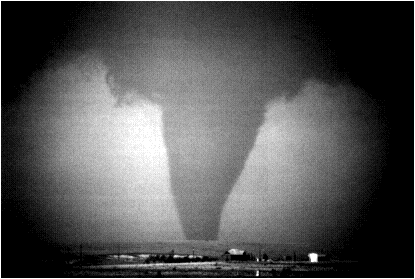Principal Aspects
Of The Path
Geshe Sonam Rinchen
Translated and Edited
By Ruth Sonam
(Snow Lion)
 The original author of the Three Principal Aspects of the Path Je Tsongkhapa was born in northeast Tibet in 1357 and died in 1419.
The original author of the Three Principal Aspects of the Path Je Tsongkhapa was born in northeast Tibet in 1357 and died in 1419.As with many masters of the time, he travelled extensively, studying under several teachers, spending most of his time in intense meditation. His own enlightenment caused him to formulate the Three Paths, being
- An active desire to emerge from cyclic existence;
- A desire to become enlightened in order to help all living beings; and
- A correct understanding of reality in order to assist other's enlightenment.
The original text consists of fourteen short stanzas, of four or five lines each. It begins with an exhortation to listen "with a pure mind." If there is no desire for freedom, it tells us, there is no way to stop the futile pursuit of "pleasant effects" in life. This desire must be accompanied by "altruistic intention" to help others. Once you realize that "appearances" preclude "annihilation," "You will never be enthralled by wrong views."
These fourteen stanzas have been transformed into over a hundred pages of text by the modern Tibetan scholar Geshe Sonam Rinchen, with explicit reference to each of the stanzas. For instance, to develop compassion, one must feel affection for all humanity. He suggests that we create a mental picture of, first, someone who is neither friend nor foe; then, on either side of this "neutral person," create a pictures of "someone you love dearly and on the other someone you heartily dislike." The point of the exercise is to meditate on the three, and realize that the three are totally alike, because they are living beings who "suffer and lack happiness yet none want suffering and all long for happiness."
 In order to create a benign feeling towards all humans, you must realize that "your mother of this life was also your mother countless times before...try to recognize that your father, your brothers and sisters, your friends and even foes have also been your mothers in other lives." Unfortunately, those of us who grew up with a mother who was El Groucho #1 will have a hard time with this one. "Your birth robbed her of vigor and beauty," he points out.
In order to create a benign feeling towards all humans, you must realize that "your mother of this life was also your mother countless times before...try to recognize that your father, your brothers and sisters, your friends and even foes have also been your mothers in other lives." Unfortunately, those of us who grew up with a mother who was El Groucho #1 will have a hard time with this one. "Your birth robbed her of vigor and beauty," he points out.
Well, she told us that several thousand times. "When you grew up she gave you her possessions and used her savings that she was reluctant to spend on herself for you," he says. Tell us about it: Mumsie must have brought that one up daily (or twice daily) when, in later life, we were vainly trying to communicate with her. "You don't know how much I suffered," she would say. "Are we going to start on that one again, Mum?" you would mutter. "And I certainly don't want to be a burden to you," she would sigh. "Say it again, please, Mum, so we can dance to it," we'd whisper.
 Actually, the more that we think about it, maybe it would have been better if Geshe Sonam Rinchen had left out this "how much your mother suffered for you" business --- at least for those of us who have had that concept drummed into our heads ad nauseam. The thought that we have to go through this song-and-dance yet again with Dad, and Sister Grouch #2, and Brother Iceburg #3 --- all out mother for another 50,000 cycles --- is enough to make a grown man cry.
Actually, the more that we think about it, maybe it would have been better if Geshe Sonam Rinchen had left out this "how much your mother suffered for you" business --- at least for those of us who have had that concept drummed into our heads ad nauseam. The thought that we have to go through this song-and-dance yet again with Dad, and Sister Grouch #2, and Brother Iceburg #3 --- all out mother for another 50,000 cycles --- is enough to make a grown man cry.
No matter. If you are into the more obscure points of Tibetan religious lore, this --- or many, many others from the excellent publishing firm of Snow Lion --- will be of great help to you. You can get their complete catalogue by writing to
Ithaca NY 14851
Tell them Mumsie sent you.
Their Mumsie.
Or their Mumsie's Mumsie.
 If you live in the middle of Oklahoma, say in a town like Enid, Yukon, or, God knows, Chickasha --- you'd better get the hell out. You can expect around nine tornadoes a year, the most in the world. Dimmit, Texas, Medicine Lodge, Kansas, and Anadark (Anadark!) OK are scarcely any better: seven a year, on average. Plant City, Florida, along with Tylertown, Mississippi and Saraland, Alabama can only manage to squeeze out five a year, but for some of us who keep our affection for tornadoes under tight control, this is enough.
If you live in the middle of Oklahoma, say in a town like Enid, Yukon, or, God knows, Chickasha --- you'd better get the hell out. You can expect around nine tornadoes a year, the most in the world. Dimmit, Texas, Medicine Lodge, Kansas, and Anadark (Anadark!) OK are scarcely any better: seven a year, on average. Plant City, Florida, along with Tylertown, Mississippi and Saraland, Alabama can only manage to squeeze out five a year, but for some of us who keep our affection for tornadoes under tight control, this is enough.